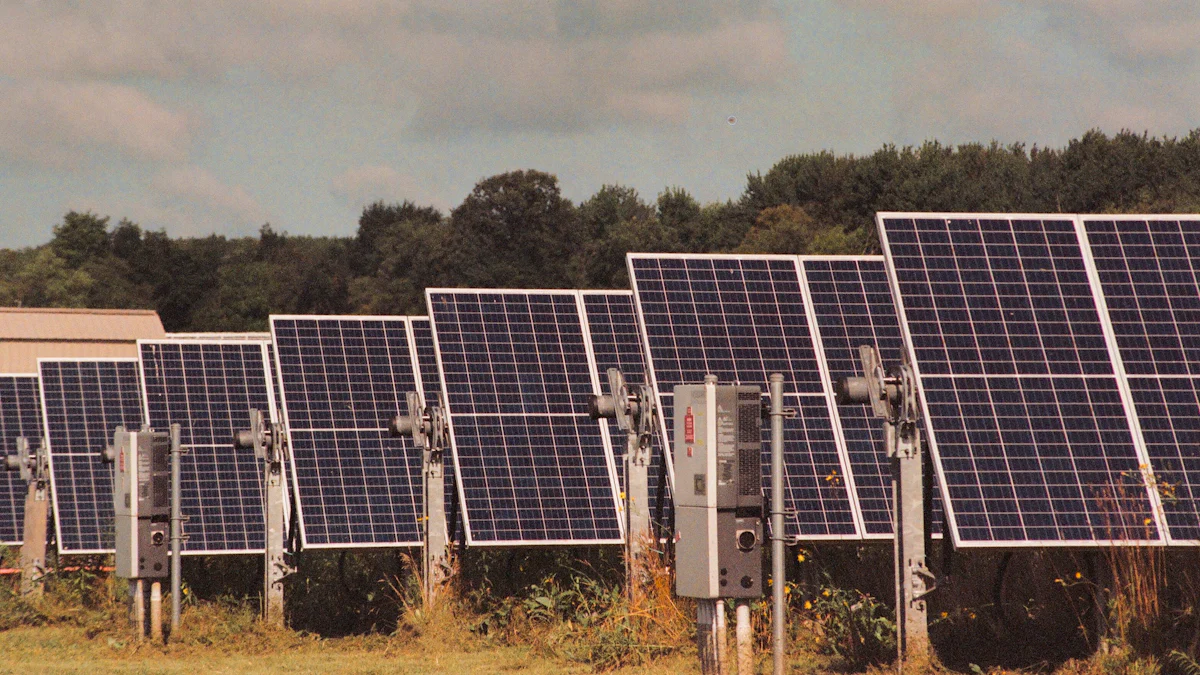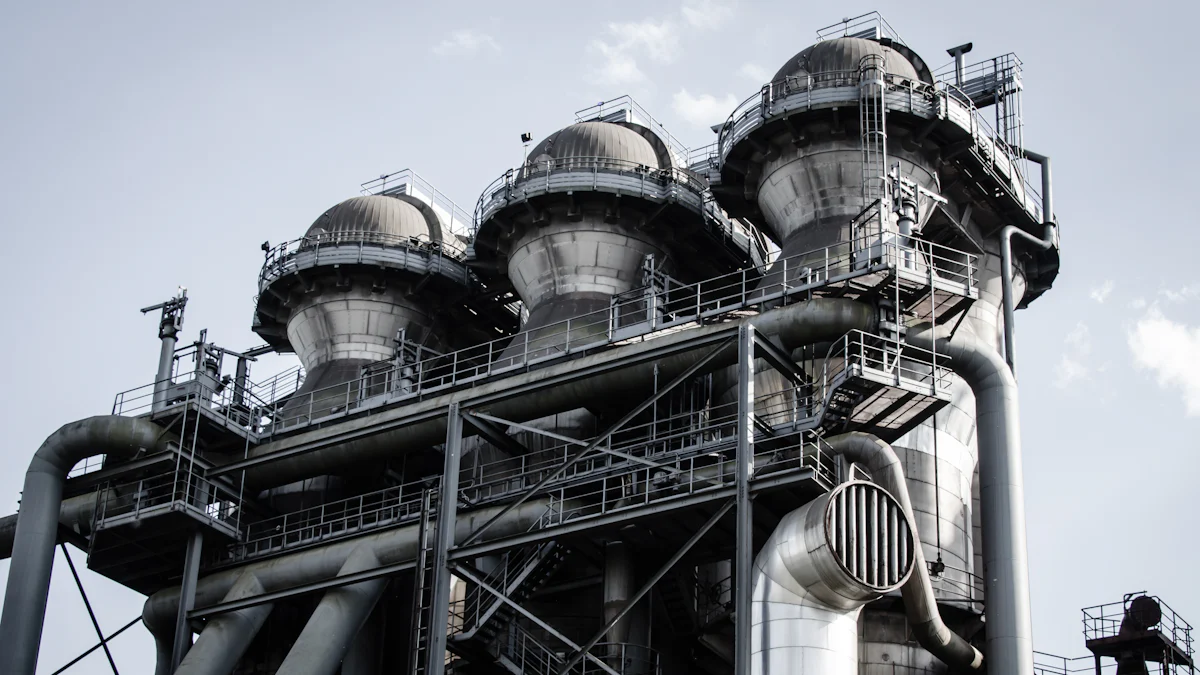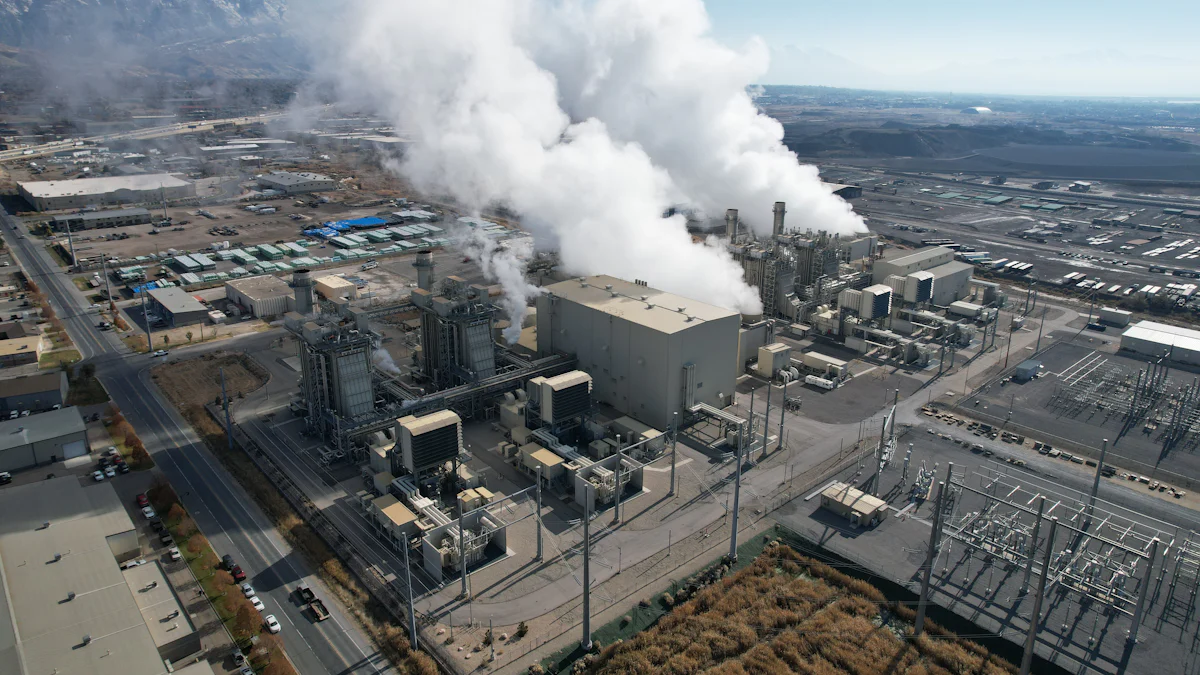
News

Canroon's frequency changer plays a pivotal role in modern industry. It efficiently converts electrical power to meet specific operational needs. This High Performance frequency changer enhances energy efficiency and optimizes motor control. Industries rely on it for its versatility and reliability. The VFD technology within ensures precise speed control, crucial for various applications. Canroon offers OEM ODM solutions, catering to diverse industrial requirements. Frequency changers have become indispensable in sectors like aviation, manufacturing, and more, driving advancements and improving operational efficiency.
Key Takeaways
Canroon's frequency changer enhances energy efficiency by allowing motors to operate at varying frequencies, potentially saving up to 55% in energy costs.
These devices significantly reduce operational costs by optimizing motor performance, leading to lower energy bills and extended equipment lifespan.
Frequency changers improve equipment performance through precise speed control, essential for applications requiring variable speed operations.
The adaptability of Canroon's frequency changer allows seamless integration into various industrial systems, enhancing operational flexibility.
Industries adopting frequency changers contribute to environmental conservation by decreasing carbon emissions and promoting sustainable energy practices.
Emerging trends suggest broader applications for frequency changers in sectors like renewable energy, driving future industrial advancements.
Canroon's innovative design and robust build set it apart from competitors, making it a reliable choice for diverse industrial applications.
Understanding Frequency Changers
What Are Frequency Changers?
Basic Definition and Purpose
Frequency changers, also known as frequency converters, are devices that alter the frequency of an electrical power source. They convert a fixed voltage and frequency to another, meeting specific industrial needs. These devices play a crucial role in controlling the speed of motors, optimizing energy efficiency, and ensuring the smooth operation of various equipment. By adjusting the frequency, they enable precise control over motor speed, which is essential for many industrial applications.
Historical Context and Evolution
The concept of frequency changing has evolved significantly over the years. Initially, industries relied on mechanical methods to change frequencies, which were often inefficient and cumbersome. With technological advancements, electronic frequency changers emerged, offering more precise and reliable solutions. Today, modern frequency changers incorporate advanced technologies, such as solid-state electronics, to provide enhanced performance and adaptability across diverse industrial sectors.
How Do Frequency Changers Function?
Technical Explanation in Simple Terms
Frequency changers work by converting the input electrical power into a different frequency output. They achieve this through a process that involves rectifying the input AC power to DC, then inverting it back to AC at the desired frequency. This conversion allows for the control of motor speed and torque, which is vital for applications requiring variable speed operations. The ability to adjust frequency ensures that equipment operates efficiently under varying load conditions.
Key Components and Mechanisms
Several key components make up a frequency changer. These include the rectifier, inverter, and control circuitry. The rectifier converts incoming AC power to DC. The inverter then changes this DC power back to AC at the required frequency. Control circuitry manages the entire process, ensuring that the output frequency matches the desired specifications. These components work together to provide a seamless and efficient frequency conversion process, enabling industries to optimize their operations.
Benefits of Using Frequency Changers in Industry

Energy Efficiency
Reduction in Energy Consumption
Frequency changers significantly enhance energy efficiency in industrial settings. By allowing motors to operate at varying frequencies, they reduce unnecessary energy consumption. For instance, a frequency converter can save up to 55% in energy costs compared to traditional outlet dampers. This reduction not only lowers operational expenses but also contributes to a more sustainable energy footprint.
Environmental Impact
The environmental benefits of using frequency changers are substantial. By optimizing energy use, these devices help decrease carbon emissions and other pollutants associated with energy production. Industries that adopt frequency changers contribute to environmental conservation efforts by minimizing their ecological impact. This aligns with global initiatives aimed at reducing industrial carbon footprints and promoting cleaner energy practices.
Cost Savings
Operational Cost Reductions
Industries experience notable cost savings when implementing frequency changers. These devices allow for more efficient motor operations, which translates to lower energy bills. For example, frequency converters enable AC motors to consume less power, resulting in significant savings over time. This efficiency reduces the overall cost of operations, making it a financially sound investment for businesses.
Maintenance and Longevity
Frequency changers also extend the lifespan of industrial equipment. By providing precise control over motor speeds, they reduce wear and tear on machinery. This leads to fewer breakdowns and lower maintenance costs. The longevity of equipment increases, allowing industries to maximize their investments and reduce the need for frequent replacements.
Operational Improvements
Enhanced Equipment Performance
The use of frequency changers results in improved equipment performance. They offer precise speed control, which is crucial for applications requiring variable speed operations. This precision enhances the functionality and reliability of industrial machinery, ensuring optimal performance under various conditions.
Flexibility and Adaptability
Frequency changers provide industries with greater flexibility and adaptability. They allow equipment to adjust to different operational demands without compromising efficiency. This adaptability is particularly beneficial in industries with fluctuating production requirements, as it enables seamless transitions and maintains consistent performance levels.
Unique Features of Canroon's Frequency Changer

Advanced Technology
Innovative Design Elements
Canroon's frequency changer stands out due to its innovative design elements. Engineers have crafted it to deliver superior performance and reliability. The design incorporates cutting-edge technology that enhances efficiency and precision. This ensures that the frequency changer meets the demanding requirements of modern industries. Its compact structure allows for easy integration into existing systems, making it a versatile choice for various applications.
Compatibility with Various Systems
Compatibility remains a key feature of Canroon's frequency changer. It seamlessly integrates with a wide range of industrial systems. This adaptability ensures that industries can implement it without extensive modifications to their existing setups. The frequency changer supports different voltage and frequency requirements, making it suitable for diverse operational environments. This flexibility allows industries to optimize their processes and improve overall efficiency.
Competitive Advantages
Distinctive Features Compared to Competitors
Canroon's frequency changer offers several distinctive features that set it apart from competitors. It provides unmatched precision in speed control, which is crucial for applications requiring variable speed operations. The device also boasts a robust build, ensuring durability and long-term performance. These features make it a preferred choice for industries seeking reliable and efficient solutions.
Customer Testimonials and Case Studies
Customer testimonials highlight the effectiveness of Canroon's frequency changer. Many industries report significant improvements in operational efficiency and energy savings. Case studies demonstrate its impact across various sectors, showcasing its versatility and reliability. These real-world examples underscore the value that Canroon's frequency changer brings to industrial applications.
Impact on Industry and Future Applications
Current Industrial Impact
Case Studies and Real-World Examples
Industries across the globe have embraced frequency changers to enhance operational efficiency. In the textile sector, companies have reported significant improvements in motor control, leading to increased production rates. A notable case involves a textile manufacturer that integrated frequency changers into their operations. They observed a 20% increase in output while reducing energy consumption by 15%. Similarly, in the automotive industry, frequency changers have optimized assembly line processes. A leading car manufacturer implemented these devices, resulting in smoother operations and reduced downtime.
Industry Feedback and Adoption Rates
Feedback from various industries highlights the positive impact of frequency changers. Many companies report enhanced equipment performance and substantial cost savings. Adoption rates continue to rise as more businesses recognize the benefits. In the manufacturing sector, over 70% of companies have integrated frequency changers into their systems. This trend reflects the growing trust in these devices to improve efficiency and reduce operational costs. Industries appreciate the adaptability and reliability that frequency changers offer, making them a preferred choice for modern applications.
Potential Future Applications
Emerging Trends and Technologies
Emerging trends indicate a broader application of frequency changers in new sectors. The renewable energy industry shows potential for integrating these devices to optimize energy conversion processes. As technology advances, frequency changers may become more compact and efficient, allowing for wider use in smaller-scale operations. Innovations in materials and design could lead to more durable and versatile frequency changers, suitable for harsh environments. These developments promise to expand the scope of applications, driving further industrial advancements.
Predictions for Industry Evolution
The future of frequency changers looks promising, with predictions pointing towards increased integration in smart manufacturing systems. As industries move towards automation, frequency changers will play a crucial role in ensuring seamless operations. Experts foresee a rise in demand for customized solutions, catering to specific industrial needs. This evolution will likely lead to more collaborative efforts between manufacturers and technology providers. The ongoing advancements in frequency changer technology will continue to shape the industrial landscape, promoting efficiency and sustainability.
Canroon's frequency changer significantly enhances industrial efficiency by optimizing energy use and improving motor control. Its advanced technology and adaptability make it a vital tool in various sectors, from manufacturing to aviation. As industries evolve, the potential for future innovations with frequency changers remains vast. Emerging trends suggest broader applications, promising further advancements in operational efficiency and sustainability. Canroon continues to lead in providing reliable solutions, ensuring industries can meet their ever-changing demands with precision and effectiveness.
FAQ
What is a frequency changer?
A frequency changer, also known as a frequency converter, is a device that alters the frequency of an electrical power source. It converts a fixed voltage and frequency to another, meeting specific industrial needs. This device plays a crucial role in controlling motor speed and optimizing energy efficiency.
How does Canroon's frequency changer differ from others?
Canroon's frequency changer stands out due to its innovative design and advanced technology. It offers unmatched precision in speed control and boasts a robust build for durability. Its compatibility with various systems makes it a versatile choice for diverse industrial applications.
Why are frequency changers important in industry?
Frequency changers are vital in industry because they enhance energy efficiency and improve motor control. They allow for precise speed adjustments, which is essential for applications requiring variable speed operations. This leads to reduced energy consumption and operational cost savings.
Can frequency changers help reduce energy costs?
Yes, frequency changers can significantly reduce energy costs. By allowing motors to operate at varying frequencies, they minimize unnecessary energy consumption. This efficiency translates to lower energy bills and contributes to a more sustainable energy footprint.
What industries benefit most from frequency changers?
Industries such as aviation, manufacturing, automotive, and textiles benefit greatly from frequency changers. These devices optimize motor control and enhance operational efficiency, making them indispensable in sectors with high energy demands and variable speed requirements.
How do frequency changers impact equipment longevity?
Frequency changers extend equipment longevity by providing precise control over motor speeds. This reduces wear and tear on machinery, leading to fewer breakdowns and lower maintenance costs. As a result, industries can maximize their investments and reduce the need for frequent replacements.
Are there environmental benefits to using frequency changers?
Yes, frequency changers offer substantial environmental benefits. By optimizing energy use, they help decrease carbon emissions and other pollutants associated with energy production. Industries that adopt frequency changers contribute to environmental conservation efforts by minimizing their ecological impact.
What are the key components of a frequency changer?
A frequency changer consists of several key components, including the rectifier, inverter, and control circuitry. The rectifier converts incoming AC power to DC, while the inverter changes this DC power back to AC at the required frequency. Control circuitry manages the entire process, ensuring efficient frequency conversion.
How do frequency changers enhance equipment performance?
Frequency changers enhance equipment performance by offering precise speed control. This precision is crucial for applications requiring variable speed operations, ensuring optimal performance under various conditions. The result is improved functionality and reliability of industrial machinery.
What future applications exist for frequency changers?
Emerging trends indicate broader applications for frequency changers in new sectors, such as renewable energy. As technology advances, these devices may become more compact and efficient, allowing for wider use in smaller-scale operations. Innovations promise to expand their scope, driving further industrial advancements.
Please give us a message